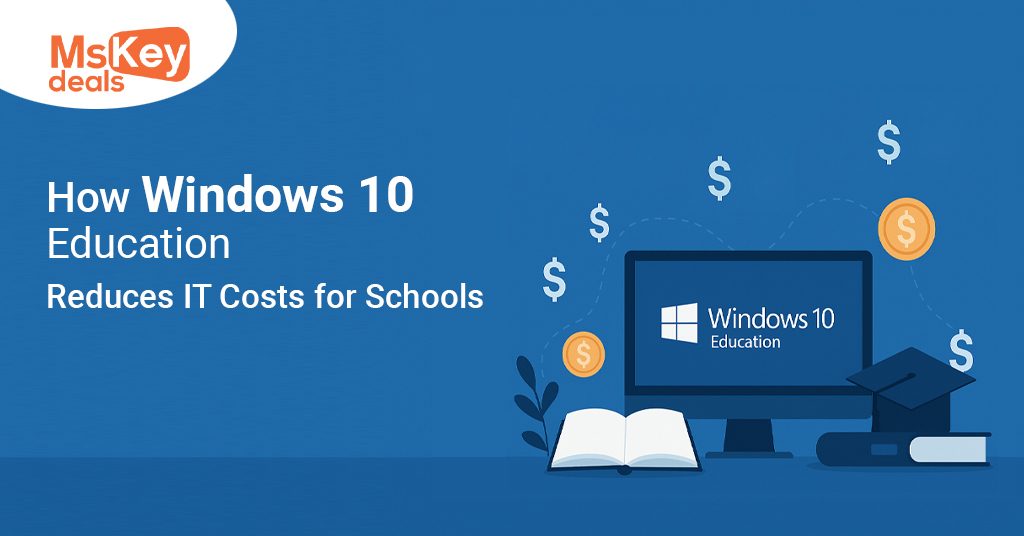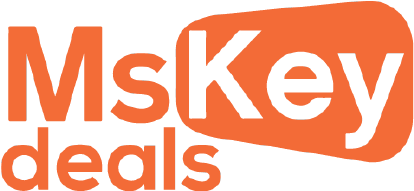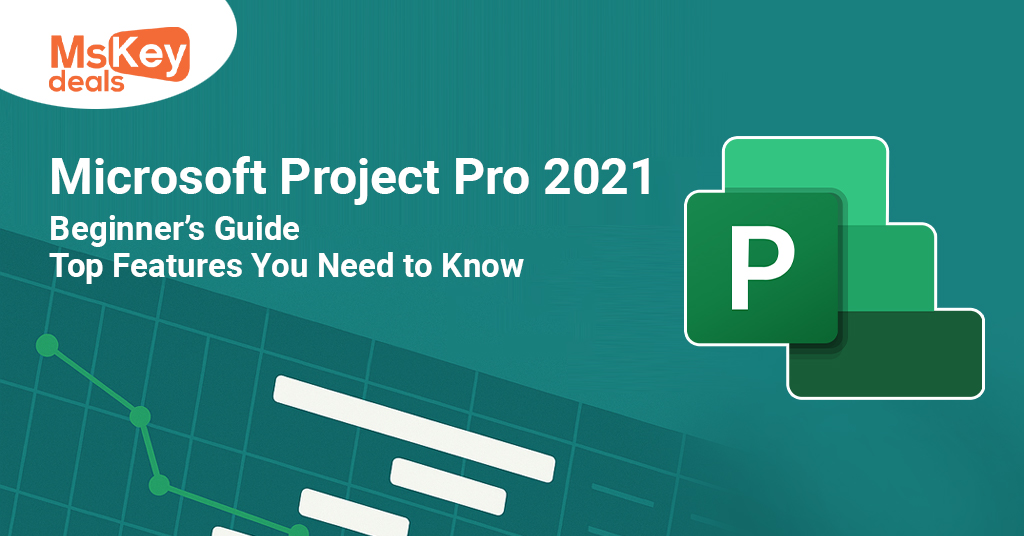
Introduction to Windows 10 Education
Windows 10 Education is made for schools. It offers strong tools for students and teachers. Many schools need simple and cheap tech. This version helps reduce big IT costs. It is better than home or pro versions. Schools get better control, more safety, and lower spending. It also works well on old PCs. With less tech trouble, schools save time and money. Microsoft designed it for learning. Teachers get support and students get smart tools. In short, it saves money and time. Windows 10 Education is the smart choice. Schools around the world now use it. It brings value and ease to every classroom. Schools with low budgets benefit most. It helps upgrade without extra costs. Let’s explore how it saves more. Many features are cost-cutting. Many tools need no extra buy. Windows 10 Education is a long-term win. You get more for less.
Low Licensing Costs
One big reason schools choose Windows 10 Education is cost. Microsoft offers discounts for schools. Bulk licensing is very affordable. You pay once for many users. This lowers your tech budget. Other Windows versions can cost more. But this version saves money upfront. Schools get access for less. Licensing is easy to manage. With Microsoft Volume Licensing, setup is simple. You get tools you need fast. Microsoft works closely with schools. They offer flexible deals. Windows 10 Education keeps licensing fair. Every student can use it. Teachers also benefit from free tools. You don’t pay more for updates. That’s a big win. Free upgrades reduce extra costs. Many schools also get support included. Microsoft wants to help education. That support saves time and labor. This lowers IT costs a lot. Licensing is not a stress anymore.
Lower Hardware Costs
Windows 10 Education works well on old computers. This means no need for new hardware. Schools can use what they already have. It runs smooth even on basic PCs. That means less money spent. No need for heavy machines. This cuts hardware costs big time. Most schools have old tech. But Windows 10 Education works fine on it. That saves lots of money. It needs fewer upgrades. It gives new life to old devices. This makes it perfect for tight budgets. No need to replace all machines. That’s a big relief for schools. They can spend on other things. Microsoft built it to be light. Performance stays stable. Students get what they need. Teachers face fewer problems. Old PCs become useful again. With this, schools save thousands. It’s a smart tech move.
Free Built-in Security
Windows 10 Education has strong built-in security. It comes with Windows Defender. This saves schools money. No need to buy antivirus. Defender protects from threats. It updates often and works well. Microsoft includes firewall and encryption tools. Schools don’t pay extra for them. All these features are free. That lowers yearly IT costs. Defender blocks malware and phishing. Schools stay safe without extra tools. No third-party software needed. This reduces setup time. Teachers and students stay safe online. Microsoft updates security often. It’s always ready to block new risks. That’s a cost-saving feature. You don’t hire outside help. IT teams save time with fewer problems. This makes learning smoother. Less downtime means better use of class time. Windows 10 Education keeps safety simple. You get peace of mind for free.
Easy Device Management
Managing many school devices is tough. But Windows 10 Education makes it easy. IT teams can use Microsoft Intune. This helps control all devices from one place. You don’t need extra tools. That cuts down costs and time. You can push updates to all machines. You can install apps remotely. That saves time. It reduces manual work. IT admins can manage from anywhere. With fewer trips to classrooms, costs drop. Microsoft offers cloud-based control. It’s safe and easy. Devices stay updated and secure. You don’t need big servers. Windows 10 Education makes this smooth. Fewer errors mean fewer tech calls. Students get help faster. Learning stays on track. Admins face fewer device issues. This system reduces stress. It also keeps tech costs down. Smart tools help everyone.
Long-Term Support
Windows 10 Education offers long-term support. Microsoft provides updates for many years. That’s helpful for schools. It means no need to upgrade soon. This saves money over time. Updates are free and often. Schools stay protected. No surprise costs come later. Microsoft makes support easy. They inform schools about changes early. Schools can plan ahead better. This cuts last-minute costs. Support means fewer bugs. That lowers the load on IT. Smooth updates mean less downtime. Lessons stay on track. Teachers don’t lose class time. Microsoft ensures system health. That builds trust. You don’t pay for fixes. Schools stay worry-free. With stable support, schools avoid costly transitions. This version is built to last. That helps schools stick to their budget.
Cloud Integration with Microsoft 365
Windows 10 Education works great with Microsoft 365. Schools get powerful tools like Word, Excel, and Teams. These tools help students and teachers. Most are included in school plans. That means fewer tools to buy. Microsoft 365 makes sharing easy. Teachers can post work online. Students can submit from home. No paper needed. That saves printing costs. Cloud tools work on all devices. Even phones and tablets. Learning becomes flexible. Teachers collaborate in real-time. That saves time and avoids confusion. No need to buy extra software. Microsoft keeps everything updated. That saves IT time. Windows 10 Education is built for cloud use. It helps save space and money. Cloud means fewer servers. That cuts power use and cooling costs. The school saves big. This combo is a smart win.
Reduced Maintenance Needs
Old systems need a lot of fixing. Windows 10 Education changes that. It’s built for stability. This lowers maintenance costs. Fewer issues mean fewer tech calls. That saves labor. IT teams work smarter. They don’t spend hours fixing bugs. Systems crash less often. That keeps learning on track. Updates happen without trouble. It’s a smooth system. You need fewer tech experts. That reduces school expenses. Devices last longer with good software. Schools don’t replace them often. This saves a lot over time. Windows 10 Education is low-maintenance. It’s designed for busy schools. Teachers don’t face many tech issues. That helps with smooth lessons. No delays mean better student focus. The system runs clean and fast. That’s what every school wants. Less work, more results. IT departments love it.
Lower Training Costs
Some systems need lots of training. Not Windows 10 Education. It has a simple look. Teachers and students learn it fast. That cuts down training costs. You don’t need long classes. Many already know Windows basics. It works like other Windows versions. So users feel at home. That reduces the learning curve. IT teams train fewer people. That saves time and money. Simple menus help staff. Even non-tech users manage fine. This version is user-friendly. Everyone learns faster. Schools save on training experts. Microsoft offers free guides. Online help is easy to find. Teachers can also share tips. Peer support grows. That builds a strong tech culture. Training costs drop by a lot. With faster learning, everyone benefits.
Compatibility with Educational Tools
Schools use many learning tools. Windows 10 Education supports most of them. That saves money on new tools. You don’t have to change platforms. It works with Google Classroom, Zoom, and more. This saves time and setup work. Teachers can keep their old apps. That helps maintain lesson flow. You don’t need new training. Everything runs on one system. That’s a big plus. Compatibility keeps costs down. No double licenses needed. That saves a lot of cash. Microsoft built it for education. So most tools fit right in. Students don’t need new logins. This reduces confusion. Schools get more done. Apps work well with no bugs. That keeps learning smooth. You get more value from tools you already own. It’s all made to fit together. This reduces tech headaches.
Support for Remote Learning
Many schools now teach online. Windows 10 Education supports remote learning well. It has built-in tools. You get Microsoft Teams, OneNote, and Skype. These tools help connect teachers and students. Learning continues from anywhere. That’s key during school breaks. It saves on classroom costs. Students don’t miss lessons. No need for extra software. This saves money. Tools work on all devices. Students can use home computers. Teachers can teach from home. That reduces school power use. Microsoft keeps tools secure. You don’t need extra safety tools. Remote setup is simple. This lowers support calls. Students get updates at home. No need for in-person tech help. Schools stay ready for change. Windows 10 Education handles remote learning with ease. It saves schools time and costs.
Better Data Protection and Compliance
Schools handle lots of data. Windows 10 Education keeps it safe. It follows school data laws. That prevents fines. It has tools like BitLocker. They protect files from leaks. Microsoft helps schools meet data rules. That saves money. No need to hire legal experts. The system is built for safety. That brings peace of mind. Parents trust schools more. Students’ info stays private. IT teams worry less. Microsoft updates these tools often. That keeps schools ahead of risks. You don’t buy extra software. That saves more. Windows 10 Education protects your whole system. It handles backups too. That reduces data loss. Compliance is built in. That makes audits easy. It saves time and legal costs. You can download it form this link.
MS Key Deals: Save Big with Microsoft Offers
Now is the best time to switch to Windows 10 Education. Microsoft offers special MS Key Deals just for schools. These deals give big discounts. You can get licenses at very low prices. Some schools even get them free through academic partnerships. The more you buy, the more you save. That means real value for your school.MS Key Deals include more than just Windows 10 Education. You also get Microsoft 365, Teams, OneNote, and more. These tools help with online learning, file sharing, and teamwork. Training and updates are included in many deals. No hidden costs, no stress. Microsoft works closely with schools. They offer support with each license. This helps your IT team and saves your budget. These deals work for all school sizes—big or small. Just ask for a quote.
Visit the official MS Key Deals site or talk to a Microsoft rep. See how much your school can save today. Act fast. These offers help schools grow and spend less.
Conclusion: Windows 10 Education is the Smart Choice
Windows 10 Education helps schools cut costs. It offers many built-in tools. These tools save time and money. Schools avoid extra software. They use older PCs longer. That saves on hardware. Security tools are free. No need for paid antivirus. Remote learning is easy. Microsoft includes useful apps. Data is always safe. Teachers and students learn fast. That reduces training needs. With MS Key Deals, schools save even more. Everything works well together. IT teams face fewer issues. Support is strong and stable. Updates are free. The system runs smooth. No hidden fees show up. This version is made for education. It meets school needs. Windows 10 Education fits all budgets. It’s a smart, long-term choice. Schools get top value. Choose it to save and succeed. Upgrade your tech and cut costs. Make the switch today.

